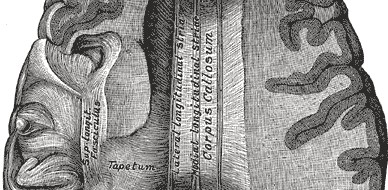Iris Kamenev, MD
UW Hospital
2023
Short story
“You cannot take the spirituality out of medicine,” Bright, our driver and a local pastor, tells me in his pleasantly thick accent as the car jolts over the unpaved road on the way to the hospital. The Christian radio station is playing a song with only two lyrics: “Marvelous God,” and red-orange dust billows up through the perpetually rolled down windows that replace the broken air conditioning. Bright takes his rag and wipes off the dashboard for the dozenth time. His teasing rebuke is a response to my not-so-subtle skepticism at his assurance that he would pray for my mother’s cancer to go away.
I’d been in West Africa for two weeks now, a month and a half remained of my 4th-year medical school elective at a teaching hospital in Kumasi, the second-largest city in Ghana.
“But do you think that prayer alone will fix it?” I ask, trying to keep the judgment from my voice.
“Of course not!” He laughs as if the question is utterly ridiculous, as if he doesn’t see how I came to this conclusion from what he’d said. “It’s 80% medicine, 20% prayer,” he states matter-of-factly. “If you do something bad, or someone is jealous of you, you can be cursed. And that will manifest as a medical condition. That is how people think here, that is what you have to understand.”
I am the daughter of a Russian quantum physicist. I am Jewish but have only been to a handful of synagogue services in my life. There is only one religious saying that I know and live by, and I think (but can’t be sure) that it’s from the Talmud: “Whoever saves one life saves the world entire.” In short, spirituality and prayer had up until then played a non-existent role in my life.
Despite thinking of myself as very open-minded, Bright’s viewpoint was difficult for me to grasp at the time. In my eyes, of course, it was 100% medicine, 0% prayer, and this was an obvious and inarguable point.
But I quickly realize that what Bright is gently trying to tell me is that none of my patients, whether in West Africa or the US, will take me seriously or trust me if I disregard their firmly held beliefs in favor of my own religion: scientific data. This wasn’t black or white, science or religion, fact or fiction.
In the book Mountains Beyond Mountains, there is a scene where Dr. Paul Farmer, known as the father of global health, is seeing a woman in his clinic in Haiti who believes that she has tuberculosis because someone “sent” it to her.
“‘But if you believe that,’ he cried, ‘why did you take your medicines?’
She looked at him. He remembered a small sympathetic smile… of an elder explaining something to a child…
She said to Farmer, ‘Honey, are you incapable of complexity?’”1(p35)
Religious and cultural beliefs are the bedrock of people’s lives, not just in Haiti or Ghana, but all over the world. Medicine, it turns out, is not immune to this concept. In fact, it’s quite the opposite: health and disease are some of the central pillars around which these beliefs revolve. There’s a reason the hospital in Kumasi is named after Okomfo Anokye, the first priest of the Ashanti Empire.
Back at the hospital, I sit beside Dede2 and awkwardly pat her sliver of an arm. She is 8 years old and has the largest abdominal mass and smallest limbs I’ve ever seen. Her BMI is in the single digits. The tumor is compressing her diaphragm and her breathing is uneven. Her father has gone to try to gather up enough money to pay for a CT scan, but I know it’s already too late.
The following weekend, Bright drives us to the coast. In the roadside shanty towns we pass by celebrations are underway: lines of plastic chairs under plastic canopies decorated with colored cloth. Bright tells us they are funerals, which last the whole weekend and sometimes – if you’re important – an entire week. If you die old (here meaning over 50), the colors at your funeral will be black and white. Red and black, which drapes over canopies in village after village, is for those dead before what Westerners think of as middle age. But the gatherings are far from bleak; there is music and food and dancing, people smile and laugh. From town to town, the scene is the same.
In the hospital the next week, I stare at the new patient in Dede’s bed. Will this boy fare better than she did? I picture her funeral – plastic chairs draped in black and red. No weeklong celebration for her.
“When our babies die,” the neonatology fellow tells me that afternoon after my classmate had Ambu-bagged a baby for hours because there was no ventilator, all to no avail, “we need to believe our child has gone to heaven, that it is all in God’s plan. Otherwise, why go on?” He looks at me. “Do you understand?”
His and Bright’s words echo in my head. Most of the Western world sees Africans as suffering from something we term “poor health literacy.” But as Farmer’s Haitian patient pointed out, you can believe in ghosts and hygiene and curses and pharmaceuticals all at the same time. What most of us fail to appreciate is the literacy others have that we do not: how to deal with death, how to bring significance to life no matter how short-lived, how to live with the unexplainable.
That is the true health literacy.
Footnotes
- Kidder T. Mountains Beyond Mountains: The Quest of Dr. Paul Farmer, a Man Who Would Cure the World. Paw Prints; 2003.
- Name and other patient details have been changed for anonymity.
